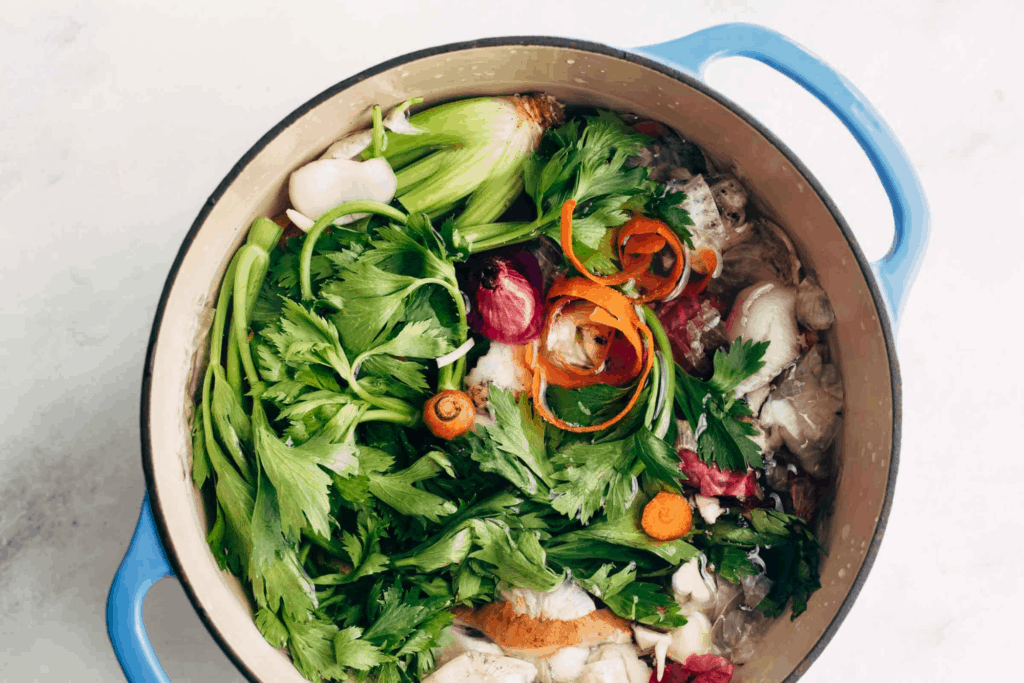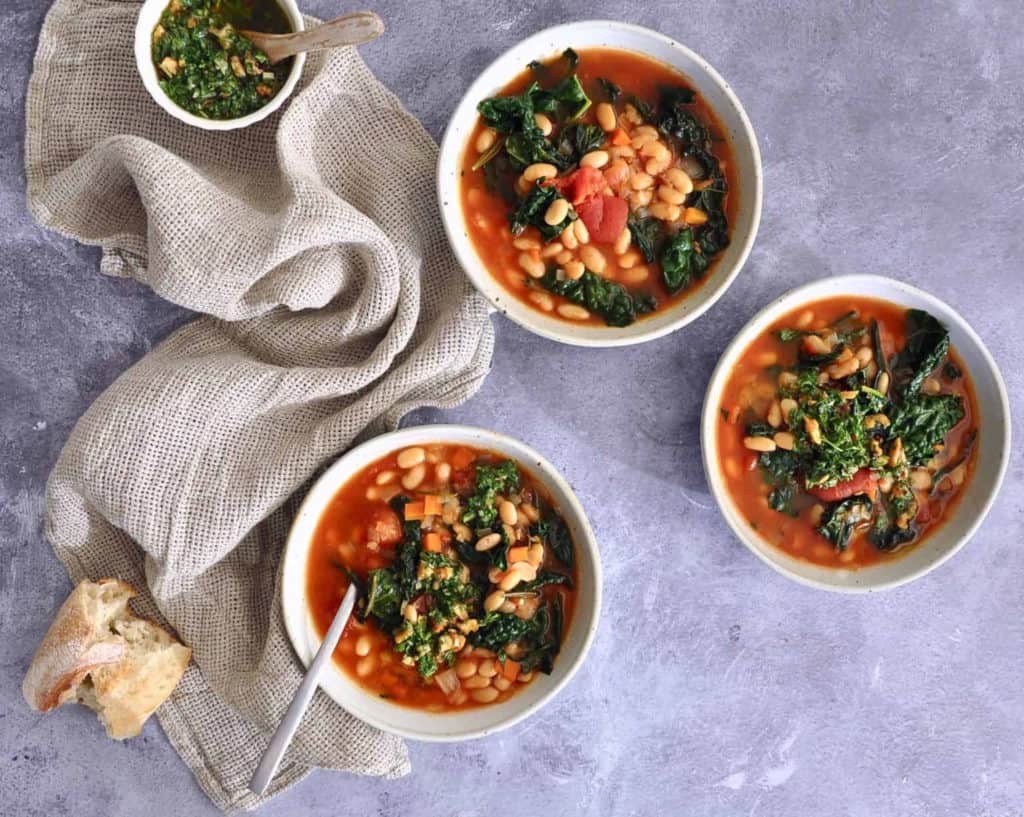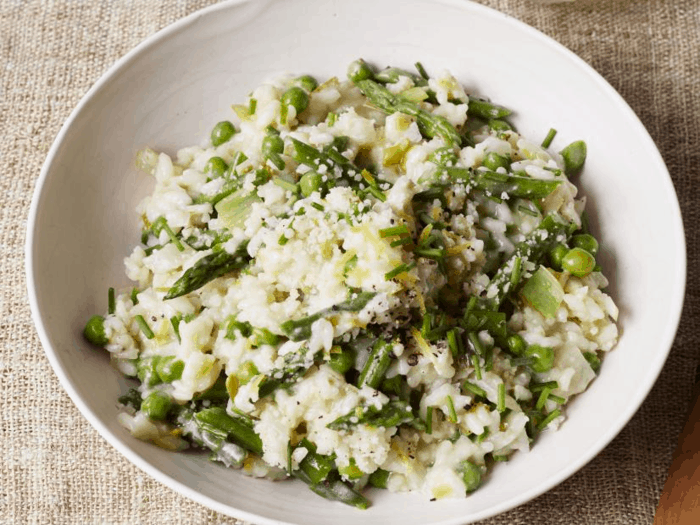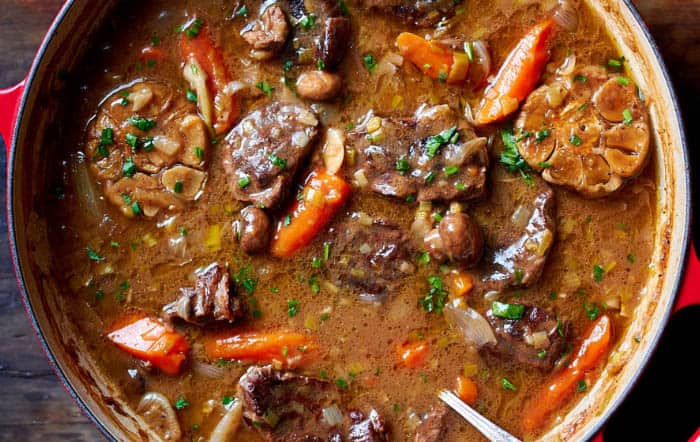
Welcome to our new series, Freezer Friendly! Here we’ll share some of the best tips, tricks and hacks for our hardest working kitchen appliance: The Freezer.
Stock is the base of so much of our cooking: Soups, sauces, braises — you name it! If you want the best results in your final dish, then why not start with the best base? While convenient, store-bought broths and stocks vary widely in flavor and can be loaded with unwanted sodium.
If you have been intimidated by making your own stock, or don’t have the time or energy, then we have a time- and food-saving hack for you: Kitchen scrap stock. When you’re peeling a carrot, have leftover mushrooms stems, onion peels, herbs that are about to go bad, or the butt of your bunch of celery — save them! Instead of tossing in the trash, store them in a gallon-sized bag in your freezer. When the bag is full, empty into a large pot, cover with water and simmer away. The longer you simmer your stock, the more flavor you’ll build. Typically, we like to cook stock for 3 to 5 hours, but even one hour will do in a pinch.
Have leftover bones from a roast chicken? Or the bone from last night’s ribeye? Use them to make chicken or beef stock!
This no-waste hack is virtually foolproof, but here are some tips to keep in mind.
- Scraps we like:
- Vegetables that add sweetness like carrots, parsnips, golden beets, fennel, corn cobs, pea pods, and leftovers of previously roasted vegetables. Sometimes we even toss a halved apple in the mix!
- Vegetables that contribute savory bass notes like onions, leek tops, mushroom stems, spinach, chard, squash peels.
- Scraps to avoid:
- Potato skins (can turn stock gummy), cauliflower, collards, broccoli, Brussels sprouts and all varieties of cabbage and kale add unpleasant bitterness, and red-tinted vegetables like red onion skins, red chard stems and red beets (will tint the stock purple).
- Our go-to flavor builders:
- Garlic, fresh or dried thyme, bay leaves, peppercorns, wine, vinegar, or non-waxy aged cheese rind (like Parmesan, manchego or Asiago).
- Sautéing the scraps together in olive oil for a few minutes before adding the water gives depth to the final stock that concentrates the flavors and adds richness. Same goes for any bones you want to add: Browning the bones of your chicken or those shrimp shells will build incredible flavor.
- Do not salt your stock. Since you do not know how you will be using it, wait to salt it until you’re building your soup or mixing your risotto. You don’t want to risk making your food too salty.
Fat Flush Soup 3.0

Backstreet Café’s Spring Risotto

O’Brien’s Restaurant’s Chicken Piccata

Creamy One-Pot Pasta with Chicken and Mushrooms

Braised Beef























Leave a Reply